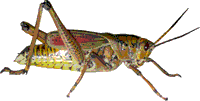Entomology Collections, General

Entomology Papers from Other Sources
Document Type
Article
Date of this Version
3-1984
Citation
The Florida Entomologist, Vol. 67, No. 1 (Mar., 1984), pp. 175-176.
Abstract
This is a summary of what is known concerning the relations be- tween passalid beetles and leaf-cutter ants, including new information I have obtained recently in Guatemala.
The microhabitat characteristic of Passalidae is rotting wood (Schuster. 1978. Coleopt. Bull. 32: 21-8). Only 1 species of passalid, Ptichopus angulatus (Percheron),' is commonly found associated with leaf-cutter ants. All life stages have been found, in various parts of Mexico, in the detritus chambers or piles of Atta mexicana Fr. Smith (Hendrichs and Reyes-Castillo. 1963. Ciencia Mex. 22: 101-4; Reyes-Castillo. 1970. Folia Ent. Mex. 20-22: 1-240). This is apparently the primary microhabitat of this species. Though Reyes- Castillo (1970) mentions that adults are occasionally found in rotting wood, larvae and pupae haven't been found in wood. Laboratory preference tests showed preference for leaf-cutter detritus over rotting wood (Reyes- Castillo. 1970). In 7 years of collecting passalids in Guatemala, I have never found Ptichopus in rotting wood. They have been found under cattle droppings (Reyes-Castillo. 1970) and there is 1 record from under stones covering the entrance of a Pogonomyrmex nest (Hendrichs and Reyes- Castillo. 1963), but this record needs confirmation (Reyes-Castillo. 1970).


Comments
Copyright Jack Schuster.